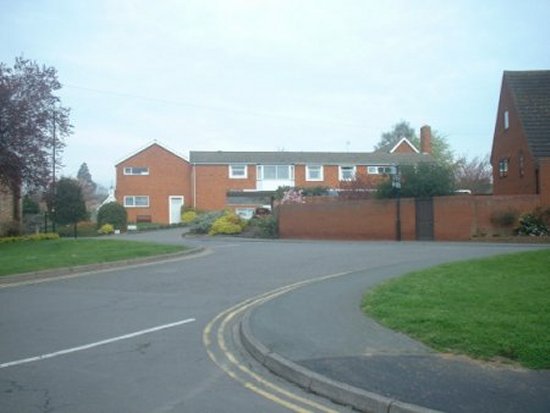Old, and Some New, Photographs of Woodbridge & Melton
The earliest photograph of the buildings on the southern side of the entrance to Cumberland St. is shown on the right. These two buildings replaced the house which is recorded in the 1840 Tithe Map and Apportionment.
The building with frontages on both Quay St. and Cumberland St. was Woodbridge's first Post Office. It opened in 1874 and its first Postmaster was Miss Emma Neal. By 1934 the Post Office required more space so it was moved to a new building further up Cumberland Street. For some time the ground floor of the former Post Office was used as a hat shop.
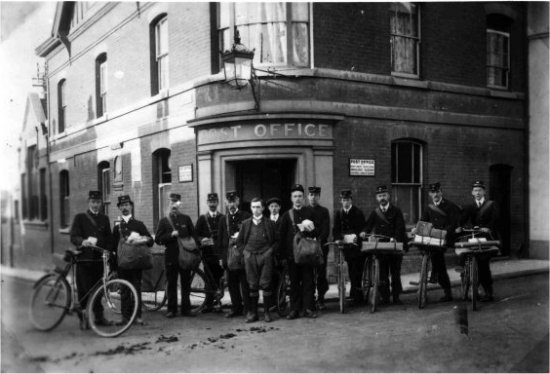
This later photograph shows how much the number of postmen had expanded.
From about 1925 the adjoining building, which had a whitewashed cement cladding, was used by A J Garnham – Jobmaster and Funeral Carriage Proprietor.
Both buildings were demolished in the 1960s and then replaced by an angular redbrick building which, over the years, has attracted many derogatory comments.
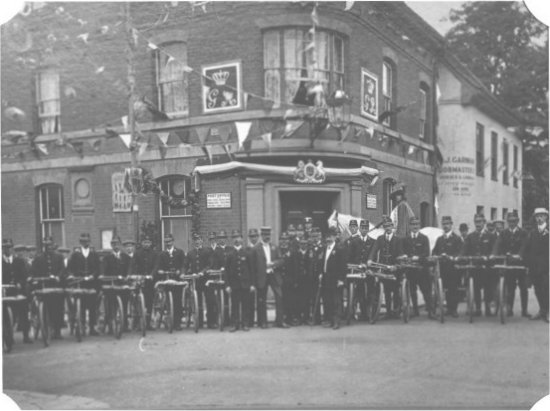
On the ground floor of the angular redbrick building there used to be a branch of the Nat West bank and the Golden Panda restaurant. The Nat West branch closed 2019 and has been replaced by a Blue Salt Restaurant. The accommodation on the upper floor has also been improved but the building remains out of character with its surroundings.
This photograph,, taken in 2020, shows the side of the building which building which abuts the entrance to Cumberland Street. The building adjacent to it is Eden Lodge.
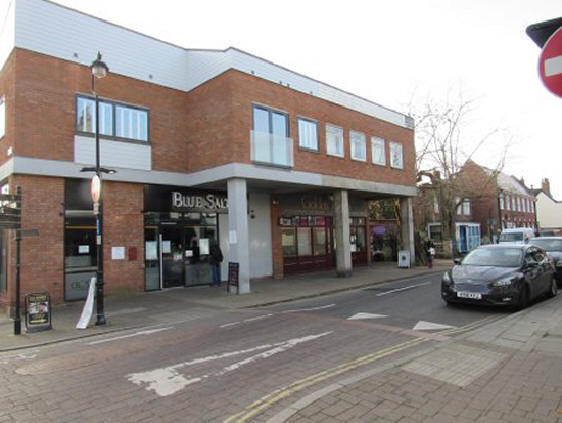
The entrance to Eden Lodge (formerly The Grove) used to be wide and was lined by trees and shrubs. The two trees near the the pavement grew so large that people thought they were a hazard and so their tops were taken out.
For a time Eden Lodge was used for offices. Woodbridge Power and Light Company, which became Eastern Electricity was the first to occupy the building. After that it was used by Woodbridge District Council and then Suffolk County Council’s Social Services Department. In 2017 it was sold and turned into apartments.
In 1950 two rather nondescript flat roofed buildings were put either side of the entrance Eden Lodge. The single storey building on the left of the entrance is a florists. The two storey building on the right of the entrance is a council run facility for children.
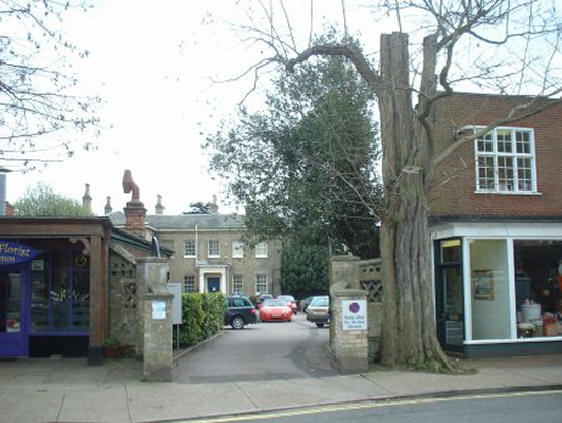
Eden Lodge, which was initially called ‘The Grove’, was built in 1818 for William Woods Page. It was on a 2-acre site set back from an old lath and plaster house fronting on Cumberland St. which was eventually demolished to improve the appearance of The Grove. An Isaac Johnson plan of 1819 shows that from Cumberland St. there was a tree lined entrance the house which had a greenhouse on the left and the coach house and stables on the right. At the back of the house there were shrubberies, lawn and kitchen garden extending to what is now Station Road. A central bay windows afforded a view of the estuary.
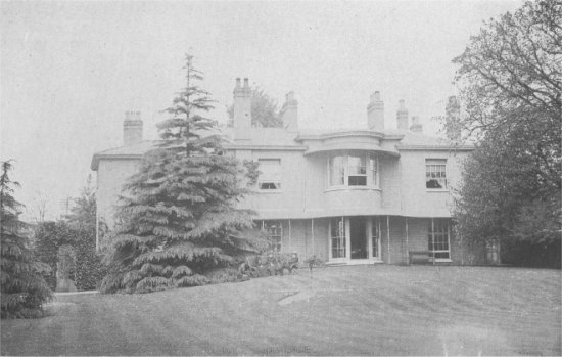
In 1934 the Post Office required more space so it moved into No 9 Cumberland St. This imposing redbrick building has a 16th century ceiling and staircase. It is possible that it had been the residence of the Postmaster. A rear extension was added to provided a bigger sorting office and in 1990 the counter service was moved to Budgen's supermarket in the Turban Centre. By the 1960's over 80% of the rear garden of Eden Lodge used for a Telephone Exchange, a substation and access to the sorting office.
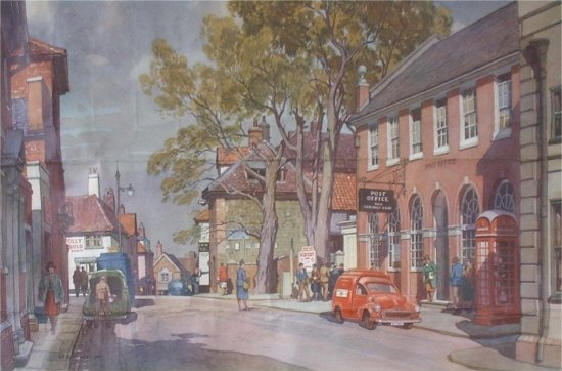
A short way down Cumberland St. is a narrow entry to Athenrye Court. on the left of the entrance is Barton's Cottage. Bernard Barton (1784 to 1840) was a Quaker and minor poet who earned his living as a clerk in Alexander's bank on Church St.. His many volumes of verse now gather dust but in his day he was widely known as "the author of much pleasing, amiable and pious poetry, animated by feeling and fancy, delighting in homely subjects, so pleasing the the English people". His father was one of the twelve men who in 1787 formed the London Abolition Committee, the committee that eventually lead to the abolition of slavery.
Barton along with Edward Fitzgerald, Thomas Churchyard and George Crabbe formed the group which called themselves the Woodbridge Wits. Barton was much loved in Woodbridge and the town's people even named a ship after him.
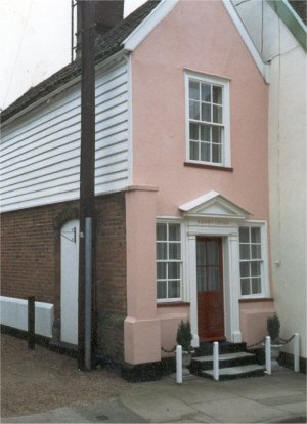
Athenrye Court was a long thin building a right angles to Cumberland Street and its extensive gardens reached down to Station Rd.. Mrs Sybil Carthew purchased the property after her husband died in 1943 and she had sold the Abbey and its 14 acres of land to the Endowed Grammar School. She went to live at Athrenrye Court until her death in 1964. She had bequeathed Athrenrye Court to the Hanover Housing Trust so that they could use it for retirement homes. They did so until the 1990's when they sold the building to raise money for their other retirement homes.
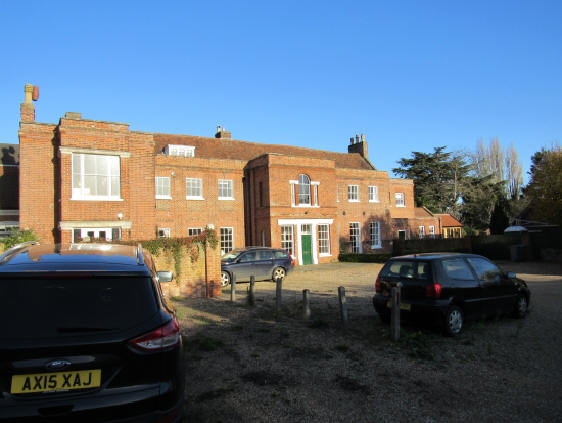
Mrs Carthew also bequeathed a large part of the garden of Athrenrye Court, and a sum of money, to build almshouses. These almshouses, which are run by The Sybil Carthew Trust, were built on the garden in 1984. Access to them is from Station Road.
Athrenrye Court has since been converted into a number of private residences.
